Ireland is a lush island full of the kind of creativity that verges on magic. Instantly you may think of its entrancing folklore, its grand literary tradition, and even contemporary authors such as Sally Rooney (endorsed by Taylor Swift) and Anna Burns (winner of the 2019 Man Booker Prize). Now I introduce you to your new obsession: these eight talented, emerging Irish female artists, each one creating a truly stunning and imaginative oeuvre of work. In this roundup, these artists share some images of their art, along with thought-provoking and lovely responses to these three questions: How did you know you wanted to be an artist, what inspires you, and what excites you about the art scene in Ireland today.
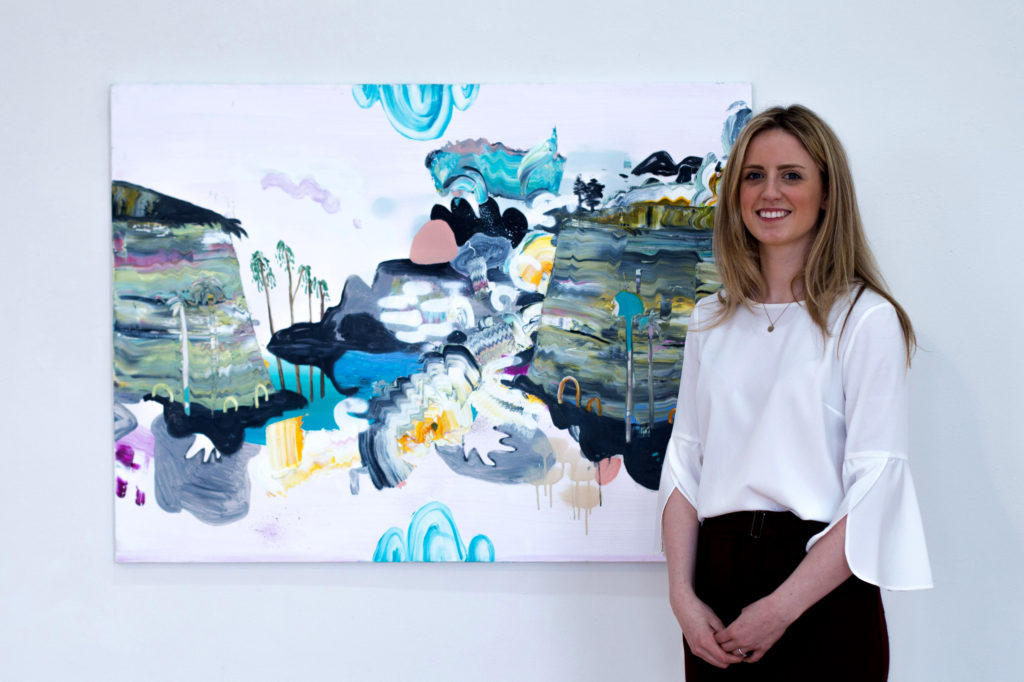
Jane Rainey
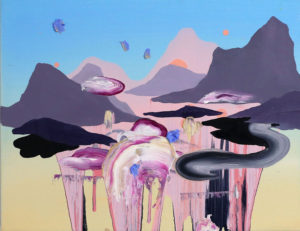
How did you know you wanted to be an artist?
In school art was the subject I enjoyed the most, I would stay up all night working on projects and wanted to spend all of my time in the art department. So when it came to picking a degree I knew I wanted to go to art college, once there I threw myself into trying out lots of different mediums until I settled on painting. The idea of being an artist as a career was always in the back of my head and I remember worrying that it wasn’t the ‘sensible’ option, whatever that means. But I quickly got over this idea and realised creating art was something I loved and had to do regardless. I think that was when I realised that I wanted to be an artist, I think an artist is anyone who brings life to ideas regardless of whether it has an audience or not.
What inspires you?
I enjoy the possibilities of the painting process. I am interested in how a landscape is built and constructed through the foreground, background, objects, etc. I deconstruct these elements and piece them back together again in new and creative ways. Not occupying a specific place or a time, the paintings are more ephemeral, suggesting the essence of reality rather than the actual thing. I get a lot of fulfilment from experimenting with oil paint itself and pushing the boundaries of what I can do with it, not subscribing to rules of how to apply paint.
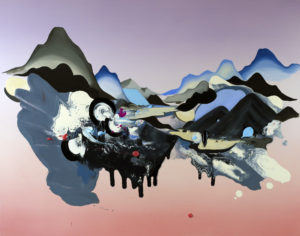
I am interested in lots of different areas of research. I look for spaces that teeter between reality and fiction, the horizon line, or the end of a rainbow. I like to imagine what it would be like to reach those spaces, giving form to the intangible and revealing the hidden. I look to great painters such as Casper David Friedrich and Edvard Munch for inspiration, painters who successfully depict vast and untameable romantic landscapes through simple form and compositions
What excites you about the art scene in Ireland today?
The artists in Ireland always find strength in adversity. The current pandemic has displayed this strength more than ever. Artists, galleries, and institutions rallied together and moved exhibitions quickly online. Emergency funding has kept most of us working and supported. Artists are still being supported and valued during a time of such crisis. Many of us found new and exciting ways to work and make art at home when the studios were closed. Our resilience and ability to adapt is what excites me most about contemporary art in Ireland.
Website: https://janeraineyart.com/
Instagram: @janeraineyart
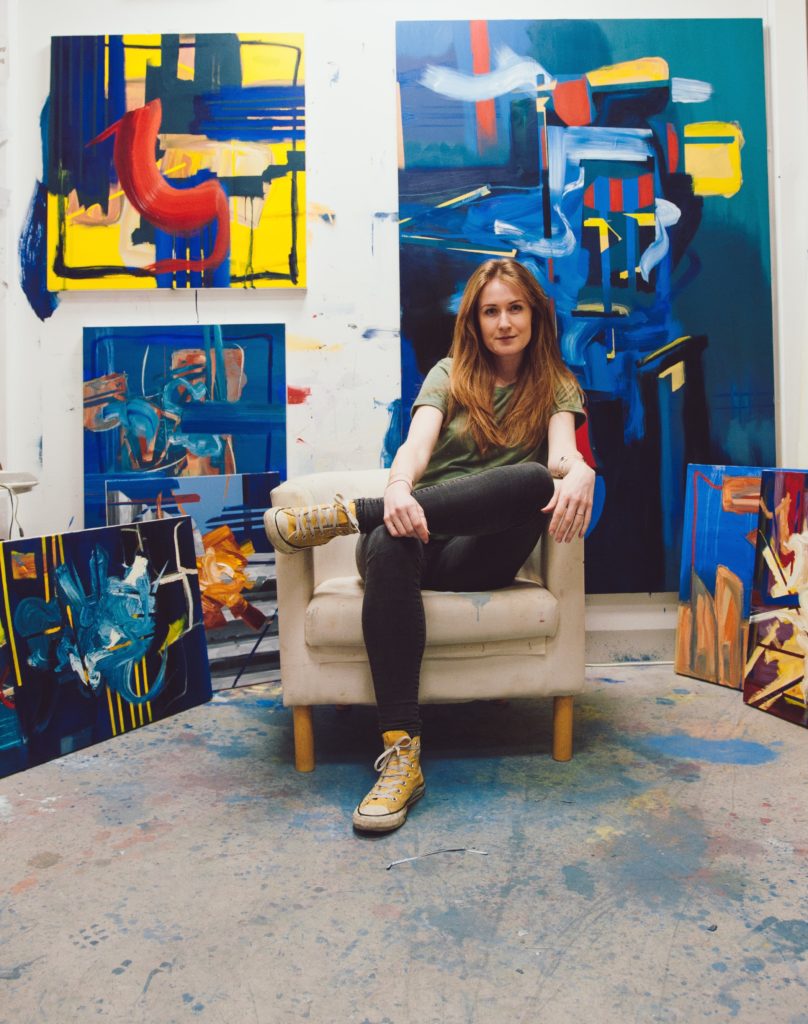
Aisling Drennan
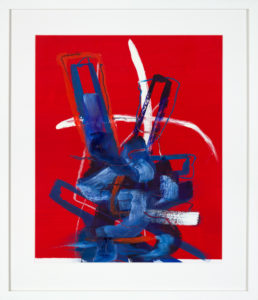
How did you know you wanted to be an artist?
My mom is an artist so she was my introduction to the art world- I feel quite lucky to have another artist in my family as sometimes such a career path can be considered too ‘other’ however growing up painting and drawing were always encouraged.
I knew I wanted to be an artist and go to art school from an early age but before I entered the world of fine art I first had a career as a professional Irish dancer with Riverdance- The Show. I was allowed to defer my place at art school in Co. Galway on the west coast of Ireland but to keep my ideas flowing while on tour I always had my sketchbook in my suitcase and made a point of checking out the museums and galleries of each city I was performing in.
Eventually, I had enough of touring life and felt ready to begin my studies. I spent four years completing my Bachelors in Fine Art at GMIT and it was a superb painting programme. I realised when I began attending art history/ critical thinking lectures I had seen most of the major art collections internationally through my dancing career which was a bit surreal.
After my BA I applied for a Masters degree in Fine Art at Central Saint Martins and graduated in 2014. Since then I’ve worked from my studio in Co. Clare (where I’m from ) and my London studio. I’ve been London-based since Covid-19 happened and have not been able to go home for a year. I’m really hoping I can get back to my studio there in the near future- Covid allowing!
I like to work in Ireland as much as I can. The art scene in London is great but at times can be overwhelming as it’s such a big, bustling & busy city. Where I’m from in Ireland is rural & quiet so I have the best of both worlds keeping studios in two very different locations.
What inspires you?
I’m afraid I’m far too impatient to sit and wait for inspiration! I’m a ‘do-er’ meaning I get stuck in, I feel my way into a painting until something clicks and creative flow starts to unfold. Painting demands a particular type of concentration and that is the most absorbing thing for me. A close second is the sheer physicality of paint as a medium; there is something very indulgent about mixing large swathes of oil paint.
My painting process is quite ritualistic, I always begin with studies in my visual diary and see what emerges. These initial studies inform each body of work but the constant within my practice is the malleable qualities of paint and its mark-making abilities. It’s a very empirical process that sometimes drives me mad! I’m intrigued by the idea of letting the paint do the work and palette wise all you need to pay attention to is light over dark- Sean Scully talks a bit about this in his Wall of Light series.
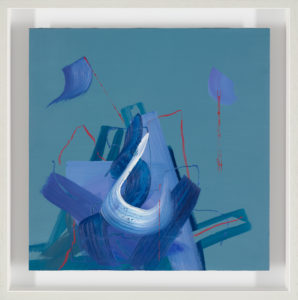
I find that preconceiving the agenda of a painting removes its spontaneity; instinctive visual decision-making is the backbone of my work. I have learned not to labour my decision-making in the studio (or I would never get a painting finished!). Sometimes this goes catastrophically wrong but I believe failing gloriously is part of the process; it’s how I learn to trust my decision making and can recognise that a lot of finer work is derived from failings.
My current painting practice is concerned with stone wall formations. I’m drawn to their heaviness of form yet lightness of appearance. In Co.Clare, we have an abundance of Limestone that has been a great source of influence but I like to experiment with various stone formations. For example, in 2019 I won a residency at Cill Rialaig artists centre in a converted famine village that was purpose-built for creative retreats- an amazing place. The village is situated in a very remote part of west Co. Kerry, I didn’t see anyone for the first three days! That time had an immense effect on my painting and I’m currently still drawing ideas from research made there into Skelligs (sharded, rugged stone) native to the area.
What excites you about the art scene in Ireland today?
I think the art scene in Ireland today is vigorous and dynamic in its own right. There are many respectful contemporary artists working in Ireland with a broad, experienced and well-informed practice that is continually enhancing the development of art in Ireland. I also think there’s a lot of cross-discipline interaction between art, dance, theatre & music which isn’t surprising given Irelands rich history of arts and culture. I hope this continues to grow and gain support particularly during this global pandemic where unfortunately the arts are taking a serious thrashing.
I’d like to highlight Irish arts organisations that have helped me through my career. I received The Freyer award for excellence in contemporary painting from the Royal Dublin Society of arts when I graduated from GMIT. This award gave me a great boost in confidence as a fledgeling artist and allowed recognition for my art practice. The arts council of Ireland & Clare arts council provided me with funding awards and bursaries so that I had a financial helping hand in undertaking my Master studies at Central Saint Martins.
Throughout 2020 and the Covid pandemic I was kept up to date about what was happening in the arts by the Visual Artists Ireland association and their webinars, seminars and artist interviews online. Also in 2020, the Royal Ulster Academy selected a painting of mine for their annual exhibition and I received an arts bursary award from the Women’s Irish Network in conjunction with the UK Irish embassy. So I think the support I’ve received as an Irish contemporary artist gives a good insight into Ireland’s art scene!
Website: https://www.aislingdrennan.com
Instagram: @aisling_drennan_art
Facebook: @aislingdrennanart
Twitter: @aislingdrennan
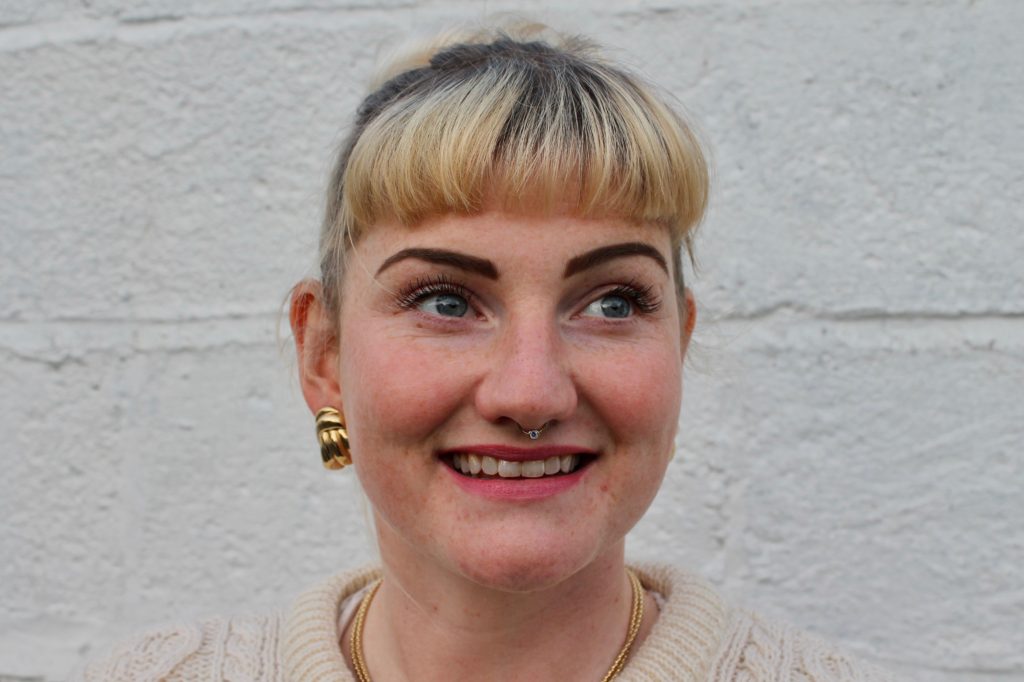
Niamh Hannaford
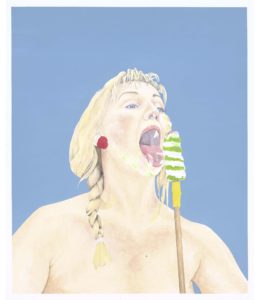
How did you know you wanted to be an artist?
There wasn’t really a point of learning I wanted to be an artist, I just, kind of, was, a creative sort. I always loved art, poetry, drama, and singing – the last I am truly terrible at…though, recently I have been trying to practise, to remind myself, and embrace the fact that, you don’t have to be good a something to do it!
I remember sketching out fashion designs when I was a kid, and trying every instrument – though never sticking with them! I’m still the same, easily distracted. Yet, I always knew I wanted to be an artist or a creator of some kind… and it just continued through school. There was never a thought about it really, I just knew I would pursue a creative career. My parents were always, and still are, incredibly supportive.
What inspires you?
Getting out in nature! I’m trying, and slowly leaning, with houseplants and the garden. I love my garden. You just feel an energy and a buzz when you connect with the earth. Your hands in the mud planting, quietly talking. There’s a flow of energy. I think that these kinds of themes are going to become more present in my work in some way or another going forward, nature, magic, and energy.
People also inspire me, connecting with people, laughing with people, and sharing stories of adversities and triumph.

What excites you about the art scene in Ireland today?
I think there is a hunger for connection that everyone, the world over, is feeling at this moment in time. And that’s the same with the arts sector. Hopefully soon, we will be able to go to exhibitions in real life again. But, until then, I have been engaging as much as I can online, through webinars/workshops/talks/exhibitions, there is just such a wealth of amazing minds in Ireland who are eager and willing to connect and share despite all that’s going on in the world right now. The positive thing about everything being online is… distance is not a barrier anymore. You can connect with people easily all over the country.
I recently did a residency with artist Tara Carroll in Creative Spark in Dundalk, and we made connection with a group of artists who work together there, Art As Exchange. They have an amazing energy to make work and host lots of online events, such as a zoom-making event, which is great just to connect with other artists and battle to the isolation that can come with studio life.
Plus a lot of the art that people are creating in Ireland today, or at least what I gravitate toward, is full, it’s fun, it’s vibrant, and it’s of an exceptionally high quality.
Do you have any exhibitions coming up?
I have a duo exhibition with artists Tara Carroll, coming up at the end of June in Pallas Projects, and I must say I am really excited to get out there and make some new work for this show! It’s going to be a busy and playful show.
Website: https://www.niamhhannaford.com
Instagram: @niamh_hannaford
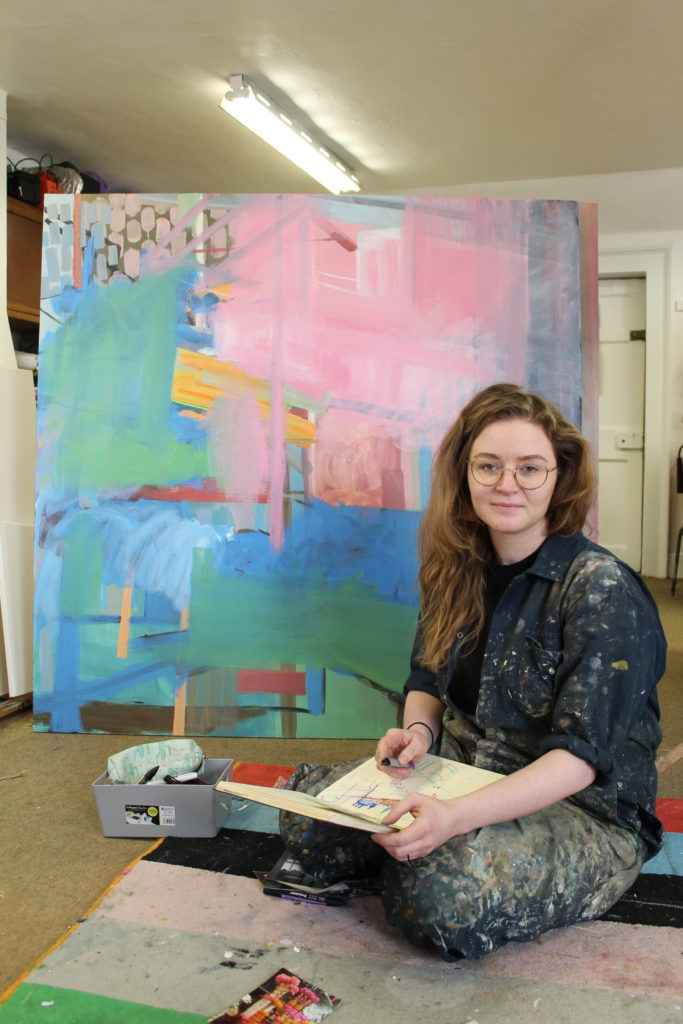
Eileen O’Sullivan
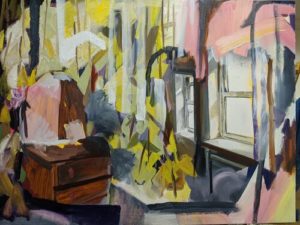
How did you know you wanted to be an artist?
In high school (secondary school as we say in Ireland), I was on the fence whether to apply to study Art & Design or Accounting at University. I’m really glad I chose the former. Making and creating has been a part of my identity since I was very young. In a family of 6 children, having something that you were ‘good at’ was a way to be your own person. Aged 18, I completed the portfolio requirements to apply to University and was accepted to many Universities in Ireland. I chose the National College of Art and Design because of its reputation and close proximity to my home in Co. Meath. In University, at the National College of Art and Design, we had the opportunity to complete a ‘core year’. No matter which discipline you intended to pursue, all students completed this common first year. We learnt design thinking processes, creative thinking, observational skills, idea development and also had opportunities to try many different media – print, metal, fashion design, digital media, painting, ceramics, etc. When it came to choosing the department I wanted to slot into, I found it difficult to decide whether to go for a design course – such as Fashion or Visual Communications or a Fine Art course, such as Printing or Painting. I could see the merit and opportunity in all of them. Really I wanted to learn them all. The deciding factor came when I took a stroll around the studios in the college. The Painting department ignited a fierce excitement in me. I felt a buzz and an atmosphere of freedom, creativity, risk. Each studio space oozed personality and gave an insight into the inner thinkings of each artist’s mind. So I chose painting. I like to think that the lecturers I had, especially Diana Copperwhite, Robert Armstrong, and Declan Long, opened my eyes to the possibilities in the art world – with their own practices and by exposing me to work by other artists. I can’t really define the moment that I ‘became’ an artist. but I have heard it described this way by Grayson Perry: You’re at a party and you are introduced to a new person: They ask you ‘what do you do? ‘ and instead of stumbling over your words, you confidently say ‘I’m an artist’. When you say it out loud, you hear yourself say it and think “I guess I am an artist”.
What inspires you?
Paint. Paint inspires me.
There are endless possibilities to the material. Regard for the material qualities of paint, its application, or appearance, is at the centre of my practice. I embrace my inclination to defamiliarize the references I work from, take them away from any precise meaning or context, to draw attention to the material. I am interested in destabilizing the photographic illusion by imposing patterns and disruptive marks. My paintings present references from personal photographs and places I have inhabited. I pursue sensations of being in a space. I make spaces made up of saturated and compressed references to create worlds of vague familiarities. I take conceptual inspiration from psychological theories. Visual motifs include architectural structures, domestic interiors, foliage, figures – motifs which are familiar in the history of painting.
My interests lie with creating paintings that slowly unfold, from an initial emphasis on composition and structure to a subtle undercurrent or frisson of complex emotion brought about by the dissolving of the space in the painting, a kind of chaos around a suggestion of figures. I am interested in bringing in the figure, more often than not, into mundane spaces. The figure and ground have the equal value and the painterly invention is primary.
What excites you about the art scene in Ireland today?
I find Ireland has a vibrant contemporary art scene. It is a very supportive environment where artists tend to help each other along the way. I have often reached out to artists who have had experiences I aspire to have. They are often more than happy to help and to have a chat about their experiences. It excites me to have a participatory role in the contemporary art scene, rather than being an outsider looking in. It gives me such energy to form personal relationships with people who think about things from such interesting angles. I feel a sense of pride when I see artists I know making exciting work – artists such as:
- Eimear Murphy, who manipulates concrete and building materials to explore how viewers interact and learn from engaging with art.
- Eleanor McCaughey, who has brilliant skill for painting and uses it to explore vibrant materials and a nostalgia for nineties aesthetic combined with stories from art history.
- Robyn Carey, a printmaker and designer, who has a fire inside her to succeed in bringing artists together and creating accessible art.
- Liliane Puthod, whose practice often takes the form of large-scale installations and sculptures using both handmade and industrial materials as a way to confront archaeological and commodified times.
- Marian Balfe whose practice presents the vernacular of rural Ireland in an often humorous yet delicate manner. Her background in architecture and Graphic Design shines through in her paintings, sculptures, publications, and installations.
In regard to painting, artists who excite me are Taffina Flood, Diana Copperwhite and Eleanor McCaughey, Mairead O’hEocha, Sinead Ní Mhaoinaigh, and Kathy Tynan, to name a few.
Website: https://www.eileenosullivan.com/
Instagram: @eilo8
Saffron Lily
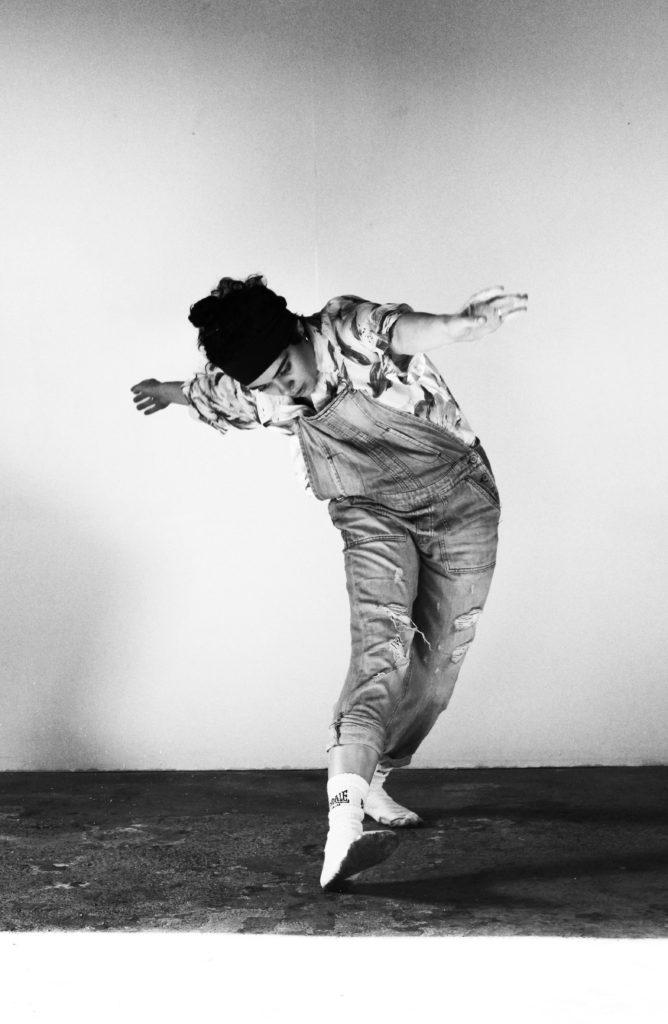
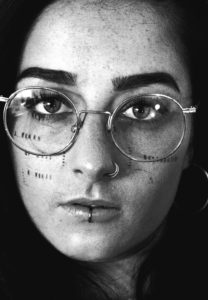
How did you know you wanted to be an artist?
I’ve always felt the desire to express things through different art forms. Everything I love is inextricably linked to that world, and I’ve always just wanted to engage with it as much as I could.
What inspires you?
I’m inspired by moments of connection, people, stories, hope. The emotions that get tangled in your stomach. I’m inspired by the want to learn more, to listen, to witness, to love. To try and make the intangible, tangible.
What excites you about the art scene in Ireland today?
I’m excited by the possibility of change and growth within the contemporary art scene. By the influx of DIY collectives, conversations, and organisations that have come about during the pandemic. I hope that more of that continues and that more resources are put into the arts into the future.
Website: https://www.saffronlilyart.com/
Instagram: @saffronlilyart

Niamh Flanagan

How did you know you wanted to be an artist?
I was always interested in art – my mother is a painter and there was always art and music in my home growing up. I guess when I was in school, I liked a wide range of subjects, but art was the one that I could get really absorbed in. I would forget about the time, or the other work that needed to be done, and just engage with the process. Printmaking really appeals to me because often it is like a puzzle, with various elements that need to be solved one piece at a time. If I can’t figure something out, there is always another part of the puzzle I can work on, and come back to the problem later. I like this, because it never feels like I’m stuck! Even though sometimes I am stuck, but I can leave it simmering away in the back of my head, and when I come back to it a few days later, I can hopefully figure it out.
What inspires you?
I am inspired by lots of things- daily sea walks, books and poetry, dreams, words, and emotions can all provide starting points for my work. The process of etching and its many stages and states also sparks ideas – I find when I have a few things on the go, the ideas tend to flow, and the process itself can feed into the work. I like to make collage pieces and woodblocks too – they are more immediate and this creates a nice balance for me in tandem with the slower work of the etchings. The motif of the house is central to my work – it suggests ideas of safety and containment, community and stability, but the work also suggests something of the opposite: vulnerability, isolation, and volatility. I am interested in the narrative element of the prints, and the anthropomorphic quality of the houses, trees, and mountains in the worlds I create. These could be stages, set for action: the brooding skies suggest maybe something more than rain.
There is a dreamlike quality to my work, that I hope allows the viewer a space in which to ponder. With my own hectic work and home life, I certainly feel the need for dreaming in between the deadlines and the drop-offs. Sometimes the prints veer closer to abstraction, with shapes and colour suggesting a mood and a feeling. It is important to me that there is an ambiguity there, so the viewer is free to project their thoughts onto the work.

What excites you about the art scene in Ireland today?
The contemporary art scene in Ireland, as with across the entire world has been turned inside out since the pandemic last year. Galleries, theatres, and cultural spaces have been shut, and there is no certainty as to when they will be back. There is a huge loneliness in that for artists, without all the usual support networks of openings, exhibitions, social events, and meetings; not to mention the difficulty of making work without any certain endpoint or engagement with audiences. The studio where I work, Graphic Studio Dublin, has been closed since Christmas and we have no idea when we can open again, so our members are without their studio space and their print community. What has been quite remarkable during this time is seeing the resilience of the art community, and the shift to move things online and create meaningful engagement with artists and audiences. Here at the studio, we have been running a series of online courses for members, alongside a series of Zoom lectures by some of our artists about their practices, and one of our members, a Mokuhanga expert has been supporting a group of us in learning Mokuhanga while we are at home. Our gallery has hosted online exhibitions and featured artists, which has motivated our members to stay engaged and connected to the studio while we are not physically in the building.
I think a lot of the online engagement and support networks we have set up in this last year are a huge positive that has come out of the Covid crisis, and they will last beyond the pandemic, making art more globally accessible, which has got to be a good thing!
Website: https://www.niamhflanagan.com/
Instagram: @neevusfl

Michelle Granville:

How did you know you wanted to be an artist?
I’ve always enjoyed drawing and being creative. As a child, I loved comics and learned to draw from them, and on them! In school I particularly loved art history, and music and art have always been my companions. Art has always helped me understand the world better.
What inspires you?
Living on the wild west coast, the beauty and magic of nature, decay, and renewal has always been an influence, as has communing with & recognizing our part in nature.
Exploring human emotions, mental health and psychology are also recurring themes.

What excites you about the art scene in Ireland today.
I am excited by the DIY ethos of the arts community in Ireland, creating festivals and spaces for work to be seen outside the restrictions and limitations of commercial galleries. In particular, there are wonderful audio/ visual collaborations and experiments happening, particularly in lockdown. The recent Spilt Milk festival in Sligo (@spiltmilkfest) is just one example of this.
Instagram: @beleafmoon

Audrey Gillespie
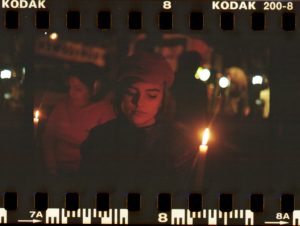
How did you know you wanted to be an artist?
I’ve always known, I’m not great at maths, I love science, not good at it though. Can’t tell what ways up most days so that’s geography off the list and I’m not very good with languages either, I love to write and try to accompany some wealth of writing along with my visual work so maybe I’d be a writer if I wasn’t so visual. But I’d probably make up visuals to accompany the writing. I think I’d always end up being an artist one way or another, there’s just never been another path for me.
What inspires you?
Memories, relationships, people watching. I’m so interested in the mystery of other narratives, others in general, the ‘other’ I suppose. I’m inspired by art and artists, of course, I’m constantly inspired by my friends. I’m inspired by myself sometimes, just getting up one day after the other. I’m inspired by the mundane, I’m inspired by acts of kindness, I think there’s lots of things to be inspired by, and some days I’m inspired by absolutely nothing.
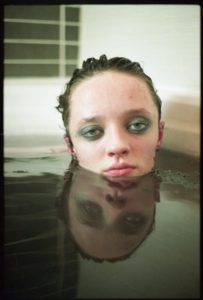
What excites you about the art scene in Ireland today?
That there are a generation of youth who so desperately have something to say, something to change, an opinion or a story. Challenging laws, societal norms, voicing their love or disgust. I love that the Irish art scene, specifically the women of the Irish art scene have so much to say, they are beckoning in their own loudness and it’s echoing to others that are encouraged to shout too.
Website: https://www.audreygillespie.com
Instagram: @artdrey_
AYA KUSCH is an editor, artist, and freelancer based in San Francisco. She grew up playing with mud, which eventually led to a love of clay and a subsequent BFA in sculpture. She is fourth-generation Japanese and a third-generation potter, a Bay Area native, and a former bookseller who still obsesses over the best way to organize a bookshelf. She loves good design, contemporary art that will worry your mom and confuse your dad, and sculptures that make you look up. She is currently working on a book about art from Edo Japan.
